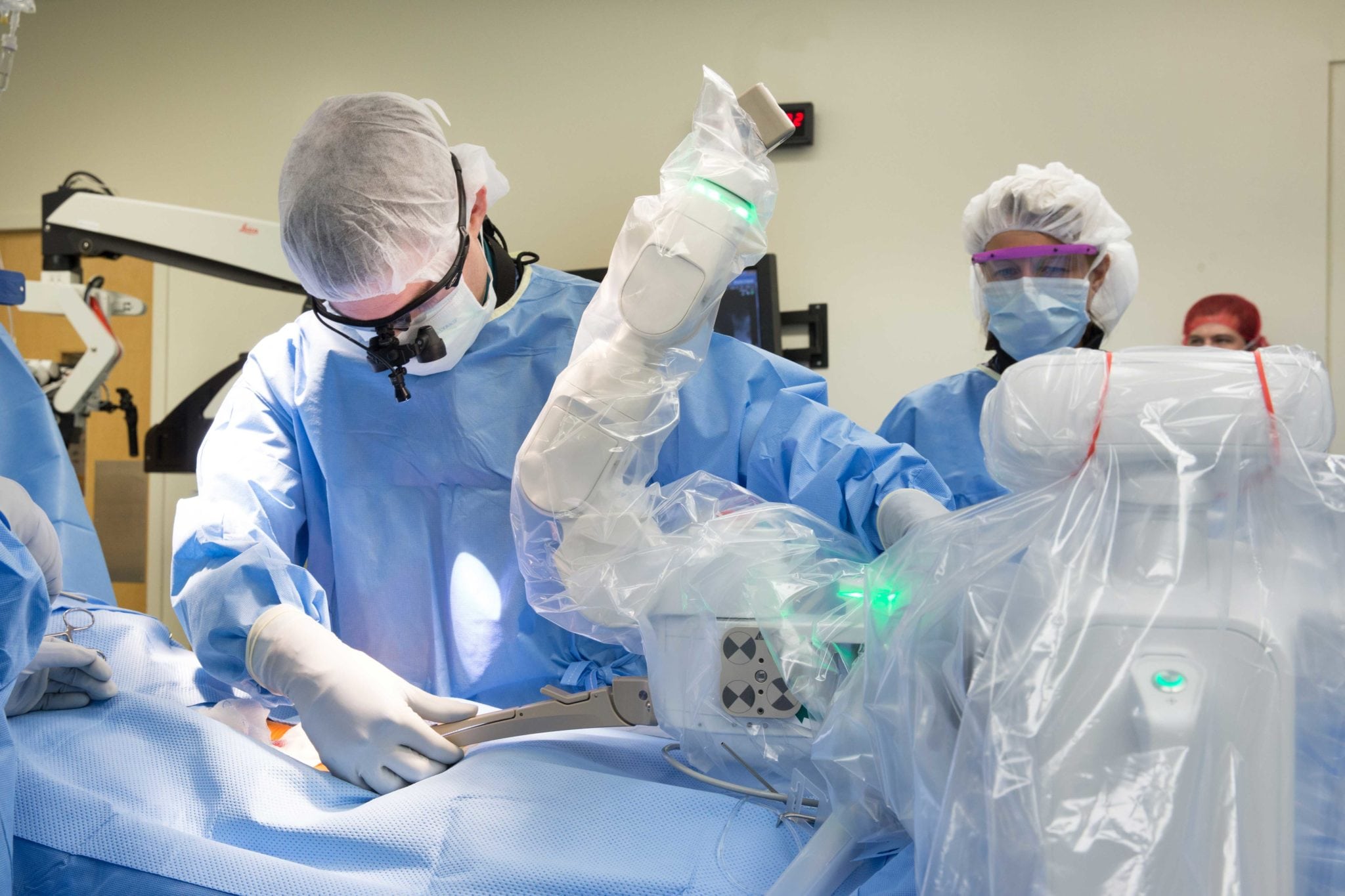By Pam Cruz
Hartford HealthCare (HHC) has introduced robotic spine surgery called the Mazor X, a sophisticated surgical guidance system that brings unprecedented precision to surgeons and their patients who need back surgery, making it the first health-care system in the Northeast to use the new technology.
Hartford HealthCare doctors performed the first Mazor cases last week at Hartford Hospital and MidState Medical Center.
HHC offers Mazor robotic spine surgery at three of its campuses: Hartford Hospital, MidState Medical Center and the new Bone & Joint Institute at Hartford Hospital.
Patients who have broken vertebrae, spinal instability, spinal deformities, chronic back pain or any other condition that requires back surgery with instrumentation can be a candidate for this technology.
The Mazor X technology is currently being used for spinal-fusion procedures. Doctors will later expand its use to for the treatment of cervical spine issues as well as movement disorders including deep brain stimulation.
During spinal-fusion surgery, bone tissue, screws and plates are placed in the problem area of the spine, and the body’s natural bone growth gradually fuses the vertebrae. The procedure requires precise placement of surgical screws and implants. That’s where Mazor X comes in.
Using the Mazor X, the surgeon can develop a detailed, digital surgical plan well before the operation.
“The patient has a preoperative CT scan, and the images are downloaded to the Mazor X software,” says Dr. W. Jay Krompinger, a Hartford Hospital orthopedic surgeon. “On the computer, the surgeon positions screw images in the spine image. You get a three-dimensional image you can rotate on the screen to make sure it’s exactly what you want.”
Seeing the patient’s complete spine in three dimensions prior to surgery increases the efficiency of the operation because the surgeon won’t encounter anything unexpected once the procedure is underway. The robotic arm will get into perfect position, so when surgeons insert the screws, they know each one is going exactly where they planned for it to go.
Mazor X also makes spine surgery less invasive.
“With this technology, we can access the spine through smaller incisions, which is a much better option for patients,” says Dr. Joel Bauman, a MidState Medical Center neurosurgeon.
The smaller incision means patients may have an easier recovery and shorter hospital stay.
Traditionally, surgeons have used “open” surgery, making a long incision to gain a direct line of sight to the vertebrae. If the surgeon chose to make a smaller incision — the minimally invasive approach — many X-rays (fluoroscopy) would be needed throughout the operation to compensate for the lack of visualization.
But Mazor X’s preoperative planning capabilities and precise, predetermined screw placement allow the surgeon to make a smaller incision and then verify proper placement with just one X-ray. And eliminating fluoroscopy means far less radiation exposure for patients.
A possible complication of spinal-fusion surgery in the past has been that the vertebrae above the fused area could develop problems over time. This may occur because implants at the top of the fused area irritate adjacent joints. Mazor X helps avoid that complication.
By planning the placement on the computer, doctors can ensure the implants don’t touch the joints above.
“We are innovators at Hartford HealthCare — and have always led the way in robotic surgery,” says Jeffrey Flaks, Hartford HealthCare president and chief operating fficer. “This is a fitting next step as we continue to pioneer guidance technology in health care to improve outcomes and safety.”
Interested in learning more about Mazor X? Join us May 16th in South Windsor, or June 6th in Hartford. To sign up, click here or call 1.844.367.1476.
.



